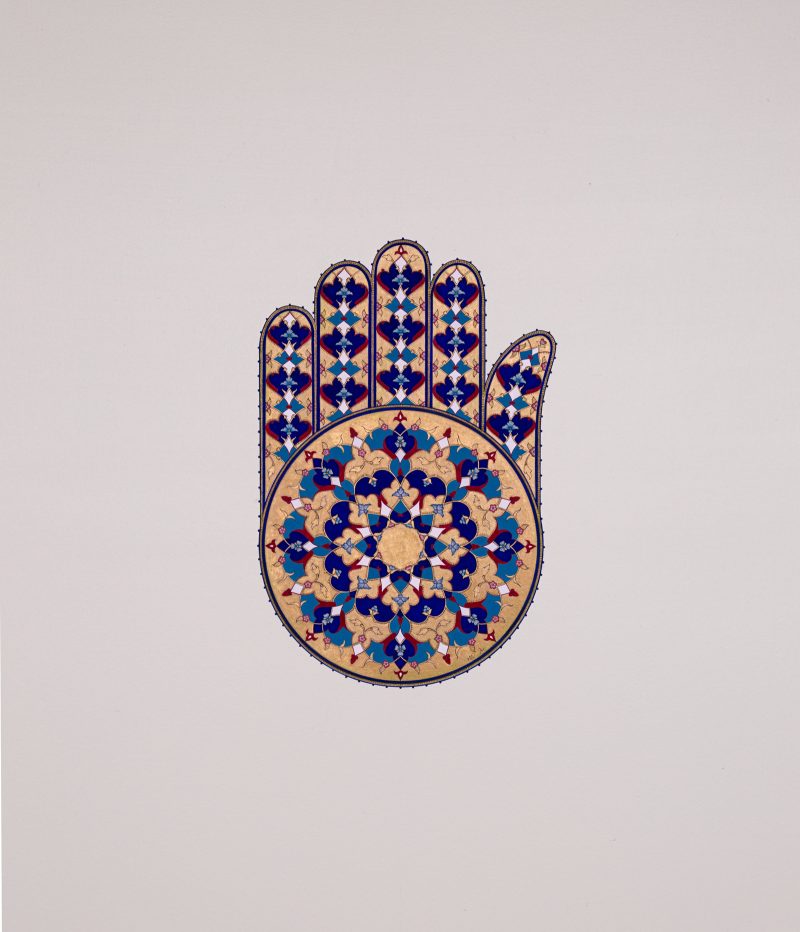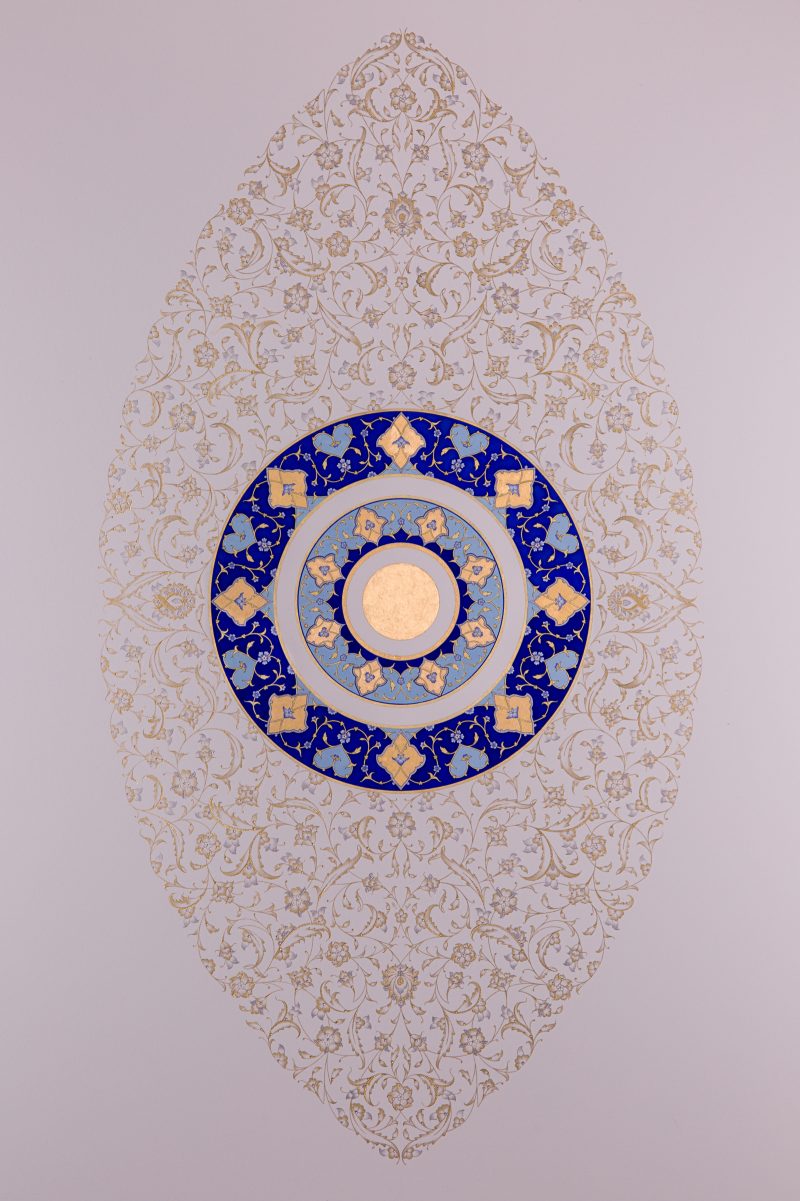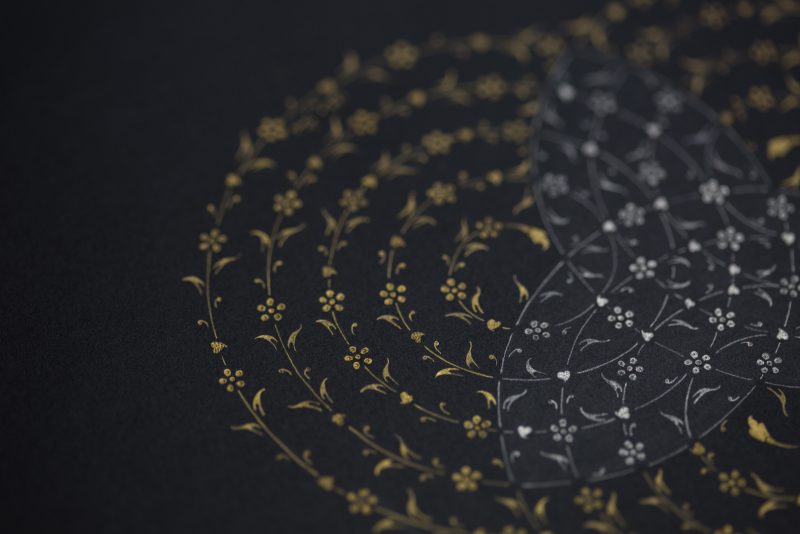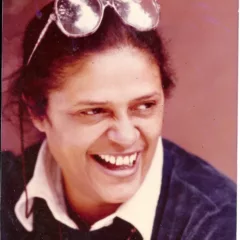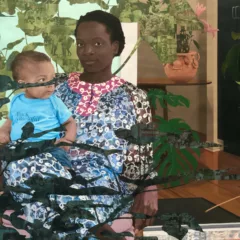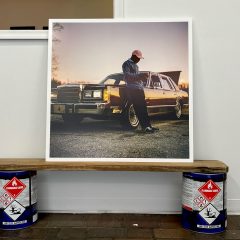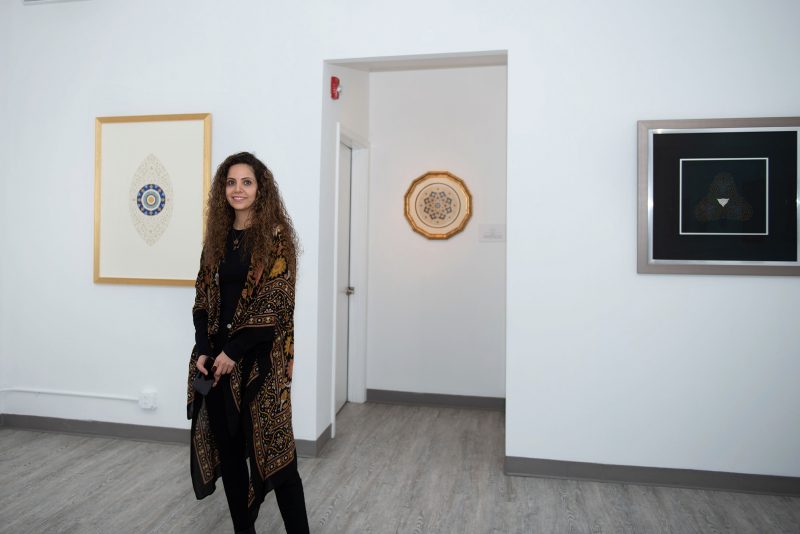
Iranian American artist Behnaz Karjoo uses the ancient Islamic art of gold illumination, tazhib, in her works. The patterns are microscopic, made with hair-thin strokes. There is a smattering of nature-inspired forms such as tendrils, petals and leaves. They are colored with crushed red gold, yellow gold or white gold, and reveal themselves a little more with every extra second you stand looking at the art piece.
Behnaz explains that tazhib started as a book art. It was used in important texts such as the Quran, mostly to navigate the reader through the content. For example, chapter headings and dots that separate the verses were illuminated. She adds in an email interview, “The illumination on the earliest works of Quran manuscripts were simple and rough, and very few colors were used. Later on, the designs became more intricate, complex, and colorful.” Reflective of the latter are Behnaz’s works at the solo exhibition Immanence, at Twelve Gates Arts.
Though Behnaz had only spent five years of her life in Iran as a child, those years influenced her the most to become the artist she is today. “I was drawn to tazhib due to my early memories of seeing it in Iran,” says Behnaz. She recalls fondly, “Those years are full of memories of culture, music, and art — the excitement on the streets during Nowruz (the new year), the beauty of its mosques, gardens, and palaces, and the sounds of traditional Iranian music, which to this day, move my soul and take me back to Iran.”
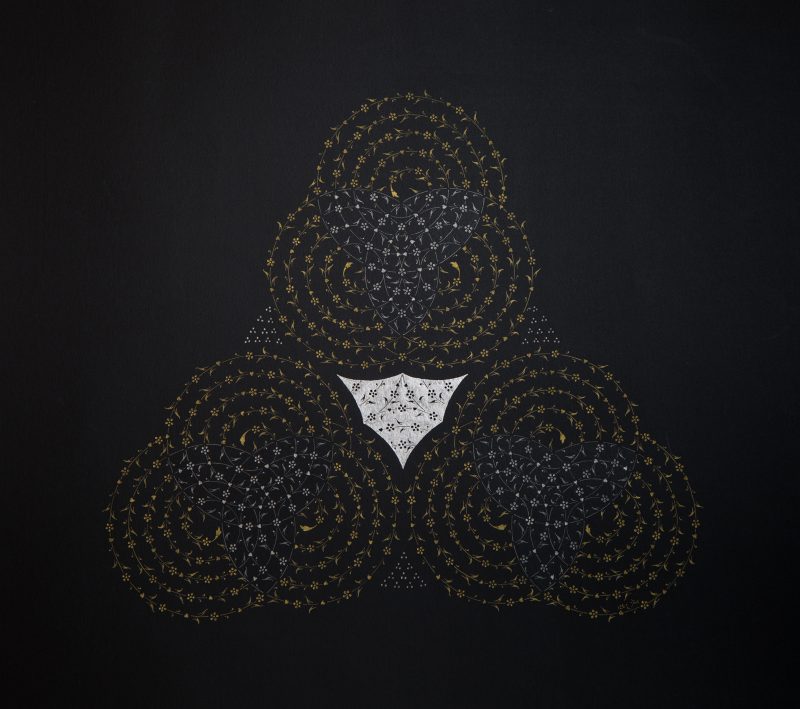
Even as she pursued her course in jewelry design and photography at the Fashion Institute of Technology in New York, she was often inspired by different Islamic art motifs and would incorporate them in her designs. “I was drawn to its aesthetics, the symmetry, the harmony, the balance, and the intricacy,” she says. Behnaz started learning the art of tazhib from Mujgan Baskoylu, founder of The New York Islamic Arts Collective, in 2011. For the first two years, all she was asked to do was copy designs from old manuscripts. “I didn’t start designing pieces until 2013! In tazhib, when you reach a certain level, your teacher tells you to start working on your ‘Ijazet’ piece, which acts as a kind of diploma.” If you pass that, you get ‘ijazet’ (‘permission’ in English) to pass down your knowledge to others.
On February 22, Behnaz will be conducting a workshop on the technique of gold illumination for the public. In this interview, she talks about her journey in pursuit of the art, the exhausting and meditative work behind tazhib, and about what to expect from the workshop.
Naveena Vijayan: Is tazhib always associated with religious texts?
Behnaz Karjoo: Tazhib is usually used to illuminate written texts, mostly verses of the Quran and Hadith. But other literary masterpieces such as Persian poetry are also illuminated. Ferdowsi’s Shahnameh, or Book of Kings, is a non-religious example which is often illuminated. I view it as a sacred art, as do many. Its purpose is to reflect the divine; divine beauty, divine majesty, divine unity.
NV: How long did it take you to master it?
BK: When I first met with my tazhib teacher in 2011, I ended up moving to the same neighborhood as her. I was able to meet with her often to ask questions, have her review my work frequently, and make corrections. The dynamics between a teacher and apprentice, with the respect that’s involved for that relationship and the art as a whole, is very important. Learning the art is more than just mastering techniques, it involves mannerisms and discipline (adab) that makes it possible to approach the art. From years of studying with my teacher, I have also learned the philosophy of the art. These aren’t lessons that were always articulated verbally, but things I’ve gleaned and learned by being close to her.
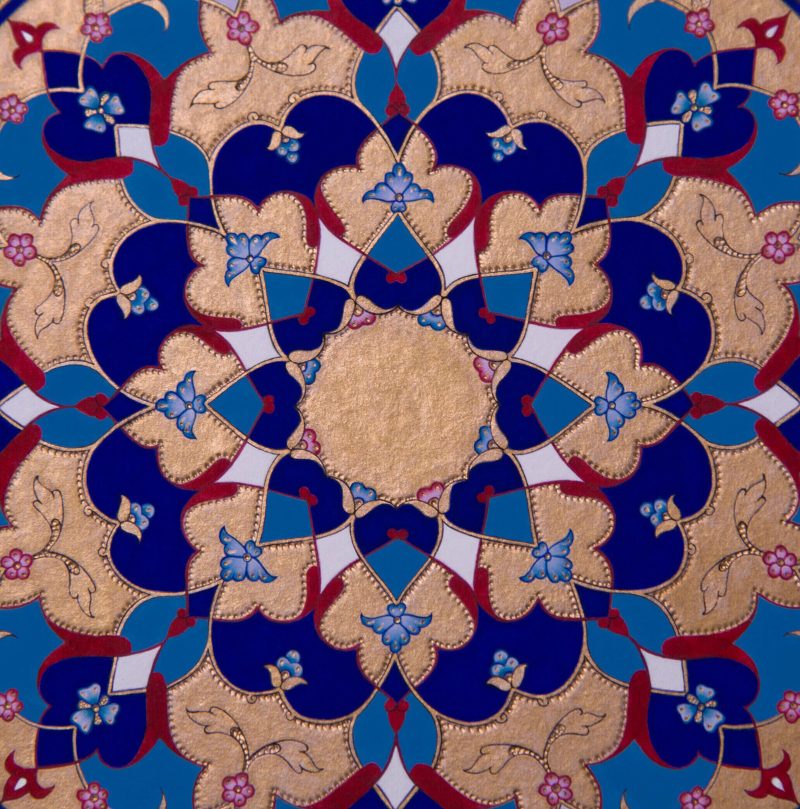
NV: How challenging was it?
BK: I decided to focus on tazhib alone when I realized my practice of other art was interfering with the patience and attention to minute detail that was required to form the intricate designs of tazhib. I remember being in figure drawing classes, which required big long strokes. When I returned to my tazhib teacher, she asked if I had been practicing, because my hand did not seem as disciplined as our last lessons. I had of course practiced on my own, but I realized the techniques from the figure drawing class were affecting my tazhib techniques and I had to let go of them.
NV: I believe gold is the main element that’s used for this, but what other materials can be used?
BK: When I first started, I was working with gouache, watercolors, and crushed gold. But as I have developed my practice, I learned more about natural pigments and decided to incorporate them into my artwork. I crush my own gold and other metals. I treat my own paper which involves applying either corn starch or egg whites and then polishing the paper. Then the paper has to sit and cure for 6 months. I also crush my own pigments out of different minerals such as semi-precious lapis lazuli and turquoise stones. I think the preparation of the material is an important part of this art. It connects you with the piece at every level. It takes hours and it involves a lot of repetitive movements.
One technical innovation in recent tazhib practice is the incorporation of platinum or palladium. In the past, tazhib artists would have used silver in their works. Silver only shines for a short period before it ultimately oxidizes to a dark gray or black. In old manuscripts one might think the inclusion of a black river is an odd choice, but the artists had originally envisioned the water to shine like silver! The use of platinum and palladium, however, ensures that our pieces remain the same color we intended them to be, as it does not tarnish.

NV: Are there enough avenues/art spaces in Philadelphia that support Middle Eastern artists/art?
BK: I’m not sure about Philadelphia but in New York there aren’t. But it’s been my experience at exhibitions that there is an interest for this art here in the United States, so it’s important to expose people to it. I’m glad for galleries like Twelve Gates Arts that are open to promoting this art. I want people to see this art and learn more about it. Especially with all the negative feelings towards Iran and the Muslim world and what the news portrays of that part of the world. I would like to share a beautiful part of that culture. I also hope that the pieces bring about a sense of peace to their hearts.
NV: What can participants of the workshop expect?
BK: In this workshop the participants are introduced to the tools, material and techniques used in painting a small simple design. They will get a taste of how much work goes into each piece and how much patience is required.
“Immanence” is on at Twelve Gates Arts till February 22, 2020. The workshop, ‘Introduction to Illumination’ will be held on February 22, 2020, from 11 am to 5 pm.
Visit twelvegatesarts.org to register.
More Photos
